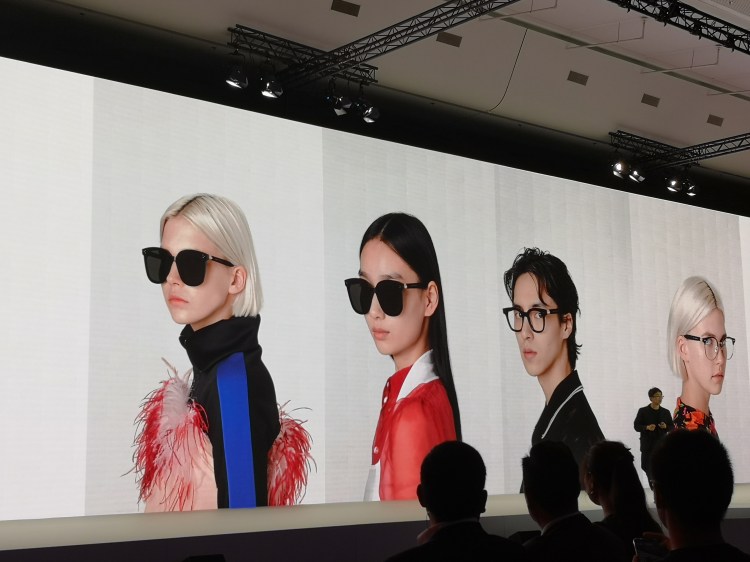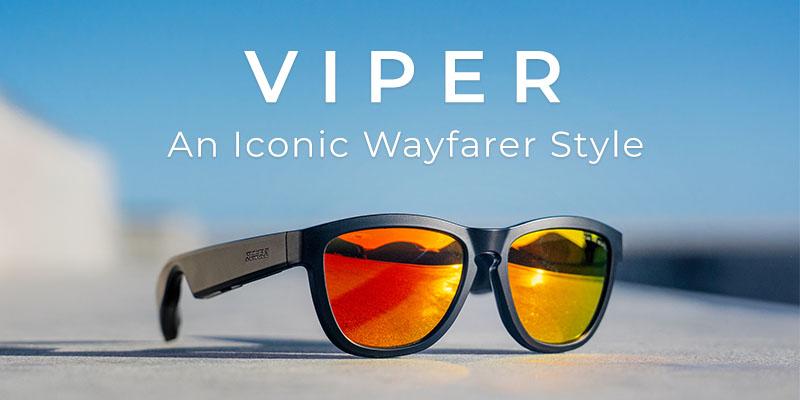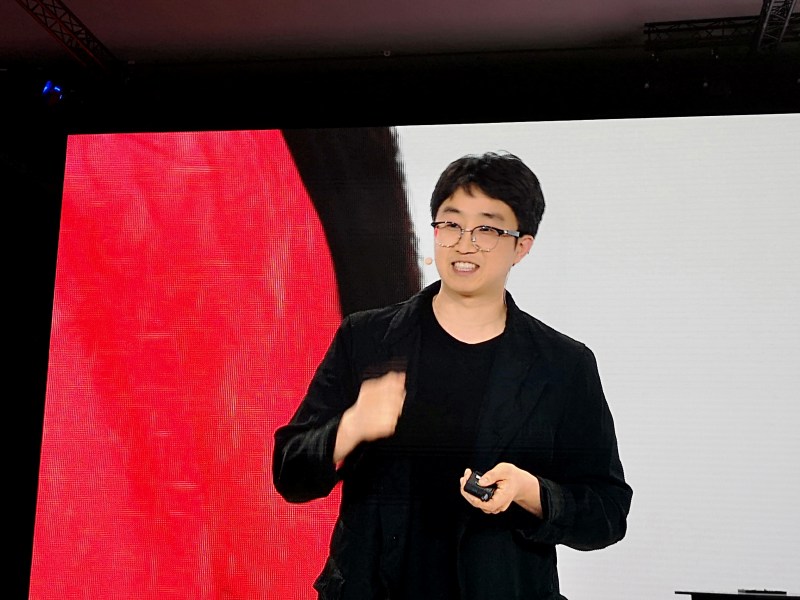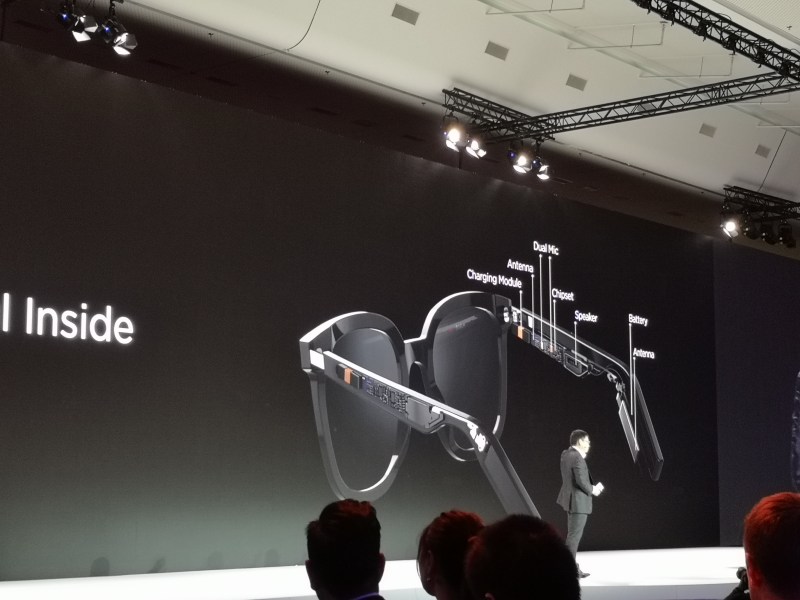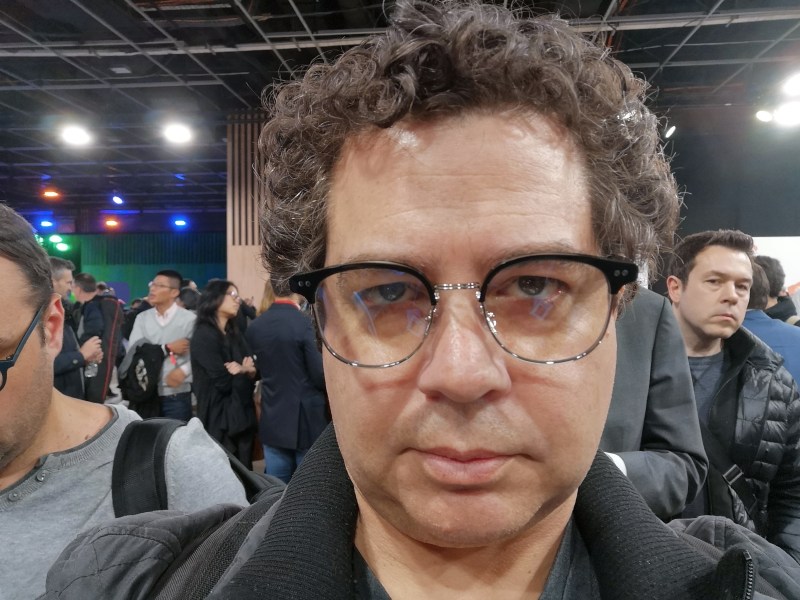Toward the end of a two-hour keynote presentation for Huawei’s new P30 series smartphones in Paris, Richard Yu took to the stage to announce that he had “one more stylish thing” to reveal: a new smart eyewear device.
Just as we were all about to close our laptops and stretch our legs, we collectively pricked up our ears. Smart eyewear, you say? What could this be?
Yu said the device had been developed in partnership with international eyewear fashion company Gentle Monster. To explain the concept, Yu invited Gentle Monster CEO Hankook Kim to the stage.
Kim offered a long explanation of Gentle Monster’s brand and design, complete with videos of its stores and animations of its glasses, and we began to get a bit impatient. Yes, yes, okay, but what about this smart eyewear stuff?
June 5th: The AI Audit in NYC
Join us next week in NYC to engage with top executive leaders, delving into strategies for auditing AI models to ensure fairness, optimal performance, and ethical compliance across diverse organizations. Secure your attendance for this exclusive invite-only event.
Coming back to the subject at hand, Kim offered a roll call of past smart eyewear devices, evidently to highlight their design flaws.
First, there was a photo of the Luxottica Radar Pace, which was created to let athletes track their performance and listen to music or to a personal coach.
There was also a photo of Google Glass, and of Snap’s Spectacles.
In addition, there was a photo of Zungle’s Viper.
Kim mused about all four: “They may be smart, but I’m really wondering, how many people want to wear these when we meet our friends or lovers?”
I’m no runner, so I can’t say much about the Luxottica eyewear, except I tend to see runners wearing all sorts of weird glasses. As for Google Glass and Spectacles, well, the answer is obviously nobody. But the Vipers, at least to my unstylish, non-designer eyes, seem like perfectly regular sunglasses.
Still, Kim wondered if these companies focused too much on the “smart” part and not enough on the “eyewear” component.
“Maybe we have to have a different approach to smart eyewear,” he said. “Maybe we have to change the order of these words. We have to remember it has to be on our face. So we have to remember it has to look sexy. It has to make us look better.”
And so, working with Huawei, Kim introduced its new smart eyewear. “It doesn’t look ugly,” he said, noting that he was wearing a pair.
So, what does it do? Yu came back onstage to highlight that this new wearable has superior sound and no buttons and is slim but powerful thanks to its Bluetooth chipset, dual microphones, and noise reduction features.
Basically, it’s for taking calls and listening to music and looking cool. But with no cameras or features on the screens, it’s not really possible to make an apples-to-apples comparison with Google Glass or Spectacles.
The future is now! Together with Gentle Monster we have joined forces to take your wearable intelligence to the next level with #HUAWEI X GENTLE MONSTER EYEWEAR. pic.twitter.com/MrgO2esXK4
— Huawei Mobile (@HuaweiMobile) March 26, 2019
As for sound quality and design, I’d have to wear a pair for a while to comment on the difference between Huawei’s and Zungle’s. I put on a pair of Huawei’s smart glasses in a demo area after the event, and I certainly wasn’t any less attractive than I had been before the day started. But that’s a pretty low bar.
Perhaps the most interesting thing to note about the announcement is that the glasses are one more sign of Huawei’s growing ambitions in the consumer realm. Originally known for its telecom equipment, the company has in recent years pushed aggressively into smartphones, along with laptops, and wearables.
Even if its products are shut out of the U.S. market, the company seems bent on deepening its design skill set to match its engineering prowess. And as a branding move, it would certainly rather have people debating its design aesthetics than its security controversies.
